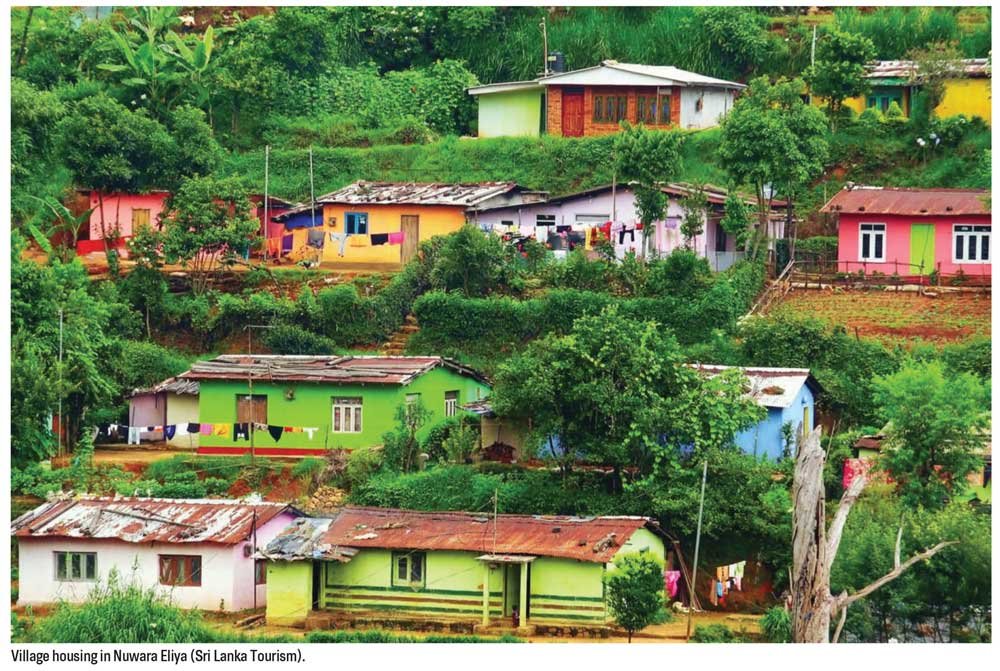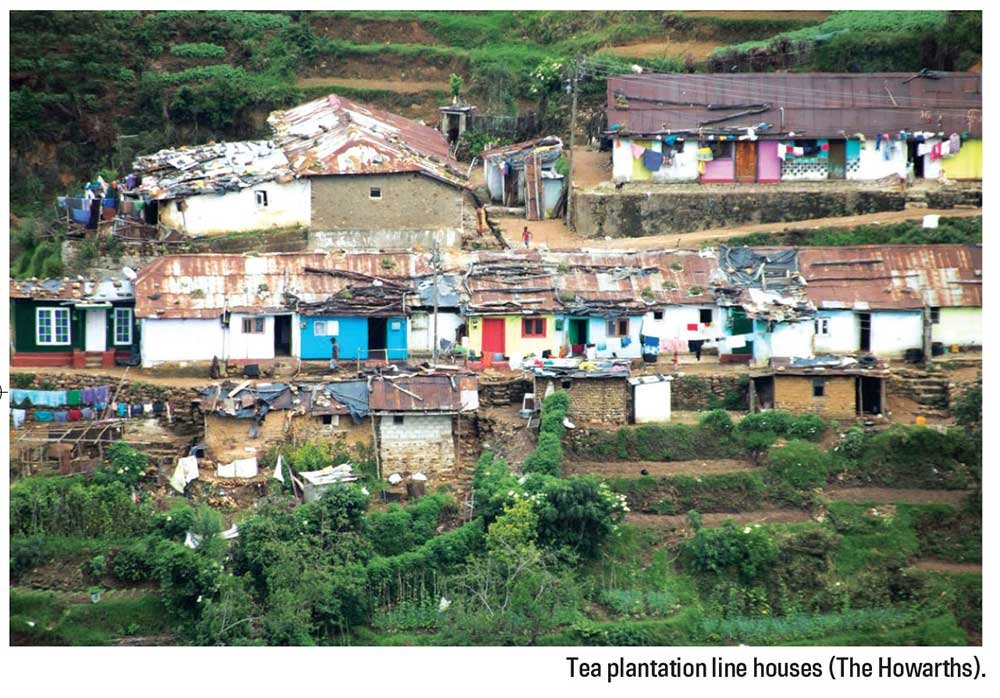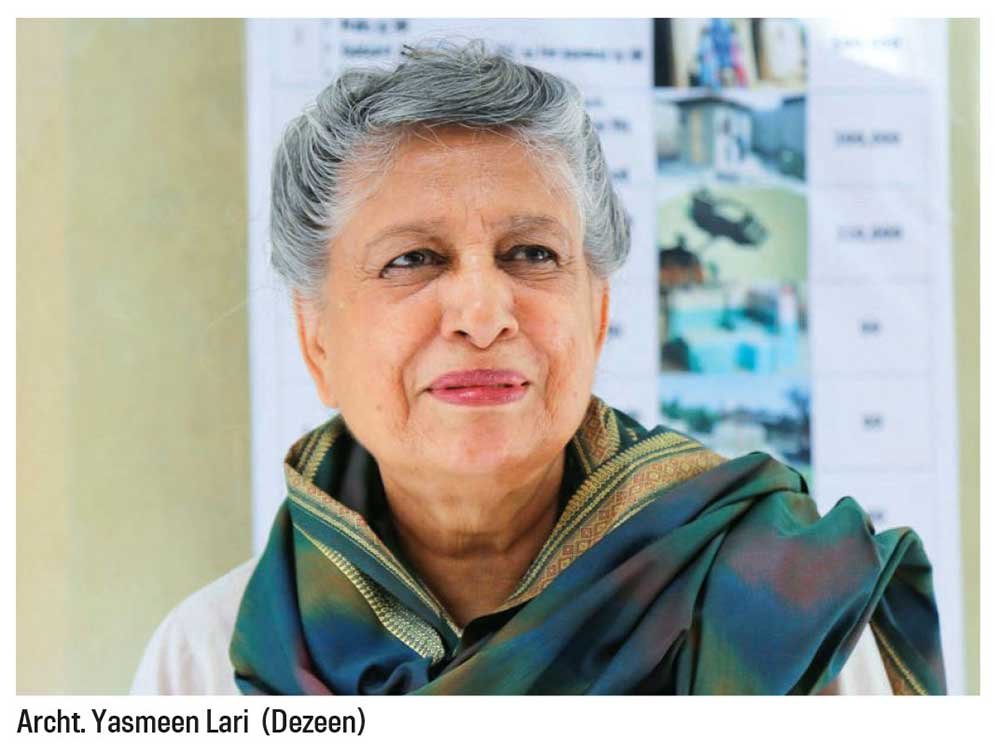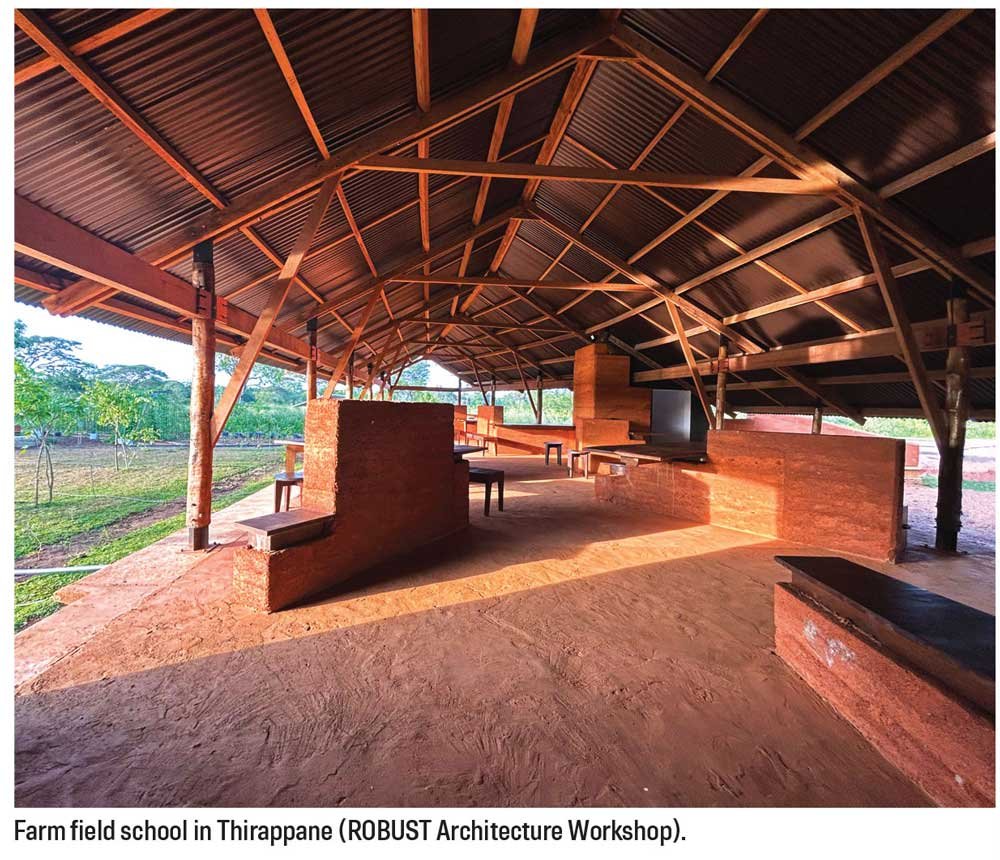RURALITY IN SRI LANKA AND THE ARCHITECT’S ROLE
BY Archt. Shahdia Jamaldeen

The definition of ‘rural’ or ‘provincial’ may differ according to its preconception within any given cultural context. What is rural to one province might not be perceived the same in another.
In a statistical and technical sense however, the term applies in the broadest sense to a region or locality of population, housing or territory not within a highly dense area. According to the UN Economic Commission for Europe, it describes certain parts of a country characterising relatively low population densities and certain key socio-economic features.
An official definition of rurality does not always exist1, and the term most often carries certain negative connotations related to social class and infrastructure. Therefore, it is no surprise that rural regions are considered in residual categories, with developed cities and infrastructure laden urbanities given more national priority.
As such, the boundaries and degrees of rurality in this article seek to target districts outside of Colombo city and surrounding suburb limits, including parts of Gampaha, Galle, Matara, Kurunegala, Kandy town and Avissawella.
Colombo, being the largest city and commercial hub, has an average population density of 325 persons2 a kilometre whereas Mannar registered an overall 57 persons3 a kilometre in 2021, indicating the clear distinction between the urban and exurban. Granted, these numbers were and continue to be affected by the aftermath of the civil war but therein lies the proof of socio-economic forces affecting definitions of rurality.
The crux of the matter lies in the inequality of resource allocation and professional attention between city and rural. While cities continue to contribute to a country’s economic and financial wealth, it is most often the rural that provide the laborious backbone to this system.
By disregarding rural development through community and housing projects in differing scales, the dangers of poverty, ecological imbalance, land abandonment and inevitable societal degradation are real aftereffects4. Whilst overlooking the major issue of stagnant government services in this matter, let us turn instead to the Architect and their role within this larger issue.
Today, Sri Lanka counts 80% of its total population as being part of the rural sector. In a country divided into nine provinces that are subdivided into 25 districts, these invisible bounds are further parcelled into several divisions containing mid to small towns, each with its collection of schools, a major hospital, post offices, banks and other essentials.
This dispersion of services is not even across the board, and may only be deemed successful based on the dedication and services of its relevant government officials.
It is unsurprising that the identity of ‘being rural’ began to be seen as unsavoury after consecutive European invasions. A once agriculturally self-sustained island with irrigation technology, the attempt to introduce industrial lifestyles and capitalist concepts along with Eurocentric ideologies led to inevitable decline and systemic cultural degradation.
A good example of this effect is the upcountry plantation Tamil community. Brought in by the British through South India on the basis of expanding the tea industry, the so-called ‘low caste’ or ‘untouchable’ community was forced into labour, and provided with criminally low wages and barely basic communal housing.
With all of Sri Lanka’s subsequent advances, it is sad to say that these conditions have hardly improved since the 1900s. As such, this man-made rurality continues to exist and is mundanely accepted as a version of ‘rural.’This was in sharp comparison to the majoritarian agricultural identity, considered a more prosperous version of rurality. It is in communities and provinces such as these that professional intervention and assistance would be most needed but can only be implemented with the support of the governing body in charge. Talk is cheap and promises are cheaper.

Architects are most often victims of the proverbial Catch 22 – a paradoxical situation where one task cannot be done or completed without the other but the second cannot be done until the first is complete. How would one provide services to uplift the living and communal spaces of your client when they cannot afford to do it themselves nor can the client?
This is where an architect would seek the support of NGO or NPO funded projects or assistance through means of CSR (corporate social responsibility). Projects implemented within these means have proven to teeter between success and failure based on how involved the community in question was in the process.
On the occasions where the government would intervene, it was the State Engineering Corporation that took the lead. Its architecture unit featured the likes of Turner Wickramasinghe, Vasantha de Silva, Jinendralal Silva and Dr. A. N. S. Kulasinghe, who also incidentally founded and patented the precast concrete method.
Alongside the Urban Development Authority (UDA) and Public Works Department (PWD), it has seen the initiation of projects such as the Gam Udawa housing scheme during President R. Premadasa’s tenure in the further regions of Anamaduwa, Puttalam.5
The decentralised planning programme sought to work at the village level, thus paving the way for the Million House Programme – providing affordable loans for low income communities in urban and rural areas to help improve their own homes, utilising cheaper and traditional methods such as regional materials, sundried bricks, mud mortar and jungle poles as roof timber. The programme went on to win a World Habitat Award in 1988.6

Consequently, with destigmatising rural livelihoods also comes the need to remove negative connotations on certain methods of construction and types of material used. Although vernacular construction methods are starting to be observed as stylish and rustic, these methods and materials were often used in rural construction as a means to an end, using lived experiences and practical analyses.
The reason soft sand was packed into the base of a rural house was so that termites would not be able to build lasting colonies within them. Window and door openings were staggered instead of direct faced as a measure of security, while cow dung, hay and soil mixtures were used for floors and walls, to promote cooling. Outhouses were placed away from wells and the main house to avoid contamination and maintain hygiene.

The social responsibility of the architect lies not only in initiating goodwill projects but in listening and respecting the values and lived experiences of the target community. By carefully considering their side of facts and methods, it creates the chance for both sides to learn new ways.
Pakistani Archt. Yasmeen Lari is a fervent supporter of low impact architecture. The programme she established – named Barefoot Social Architecture – is her response to promoting a zero carbon, self-building approach that supports impoverished and marginalised communities.
Lari stated to Dezeen: “We need to do away with the prevalent colonial mindset and the desire to create imposing megastructures.”
On the divide between urban and exurban, she said: “I want us to reset concepts to deal with the new normal – to fashion an equitable world by democratising architecture, promoting community participation, co-building and co-creation in order to help stitch the frayed tapestry of the earth; to take the lead in the use of sustainable, locally sourced materials; to incorporate attributes drawn from tradition and heritage; and to pursue carbon neutral, circular economy principles that would provide both social and ecological justice through architectural design.”7
Although Lari closed down her practice in 2000, she continues to work in democratic design and advocacy through her co-founded nonprofit organisation Heritage Foundation Pakistan.
This sentiment was also shared by Indian Archt. Rahul Mehrotra – Professor of Urban Design and Planning and Chair of the Department of Urban Planning and Design at the Harvard Graduate School of Design. In a recent interview with Godrej Design Lab on the theme of ‘Understanding Conscious Living in India,’ Mehrotra stated the following.
“What we call slums or the kacha city or kacchi abadis – they are victims of standards because we’ve deemed materials they use as being kacchi (waste or adobe) and therefore, not permanent and therefore, not worthy of being acknowledged as habitation. That comes from the code – that dichotomy and that binary is a result of the code. When you go to rural India, it is all kacha material, mud walls with tiled roofs and GI (galvanised iron) sheets. And so if we begin to imagine cities as part of this weird imagination of the world-class city or the global city, where everything is built in concrete and goes high rise, of course it excludes a better part of people. Who imagines the standards? I believe my profession of architects has become incredibly lazy about imagining the standards. We have taken standards from the West – the green building standards, LEED system standards. Now, we have GRIHA (Green Rating for Integrated Habitat Assessment) and therefore, a way in which we have indigenised it. It is contingent on the profession to imagine these standards.”
Similarly, Dr. Milinda Pathiraja’s project farm field school in Thirappane followed the exact sentiments of revitalising rustic construction such as rammed earth walls in its communal construction of the structures – with the villagers and labourers walking away equipped with sound knowledge of the system.
Prof. Eng. M. T. R. Jayasinghe8 – part of the Department of Civil Engineering at the University of Moratuwa – continues to advocate the same on the system of rammed earth construction being a viable real-time method of addressing rural community housing requirements, where the inhabitants were granted the know-how on constructing their own homes in their own way.
Which brings us back to the question: how can an architect bring about change and impact for the better in the face of this matter?
Perhaps it is not as simple as adding yourself into the equation but dependent on a matter of chance, funding and collaboration. The only takeaway is that in whatever circumstance, architects need only to bring their empathy, skill and willingness to the table over everything else.
REFERENCES
1 OECD. (1996) “Creating rural indicators for shaping territorial policy.” OECD, Paris.
2 https://www.fao.org/in-action/food-for-cities-programme/pilotcities/colombo/ru/
3 https://www.citypopulation.de/en/srilanka/prov/admin/northern/42__mannar/
4 https://www.un.org/development/desa/dpad/wpcontent/uploads/sites/45/publication/WSR_2021_BG_Asada.pdf
5 Archt. Susil Lamahewa
6 https://world-habitat.org/world-habitat-awards/winners-and-finalists/one-million-house-programme/
7 https://www.dezeen.com/2021/11/05/yasmeen-lari-manifesto-dezeen-15/
8 https://www.researchgate.net/profile/Chintha-Jayasinghe-3/publication/333994875_Use_of_Recycled_Building_Demolition_Waste_in_Stabilized_Rammed_Earth/links/60af60f2a6fdcc647edf6f0d/Use-of-Recycled-Building-Demolition-Waste-in-Stabilized-Rammed-Earth.pdf

PHOTOGRAPHY
Kolitha Perera – ROBUST Architecture Workshop
https://bmkltsly13vb.compat.objectstorage.ap-mumbai 1.oraclecloud.com/cdn.dailymirror.lk/assets/uploads/image_43beff3ca1.jpg
https://thehowarths.net/images/phocagallery/Activities/SriLanka/IMG_7512.jpg
https://world-habitat.org/wp-content/uploads/1988/01/WHA88_1020_SRILANKA.jpg
https://srilankatourisminfo.com/wp-content/uploads/2019/01/image-result-for-village-houses-in-nuwara-eliya.png
